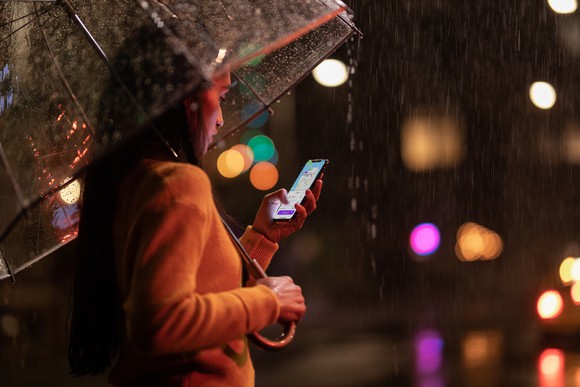Last fall, Apple (AAPL +0.42%) launched three iPhones: iPhone XS, iPhone XS Max, and iPhone XR. The iPhone XS was a straightforward upgrade to the popular (and pricey) iPhone X, while the iPhone XS Max represented a larger-screen version of the iPhone XS. The iPhone XR, however, was a new product, offering the same basic design language of the iPhone XS and iPhone XS Max but with a number of changes and compromises to allow Apple to sell it at a more mainstream price point.
Perhaps unsurprisingly, analysts with Consumer Intelligence Research Partners (CIRP) found that during the March quarter, the iPhone XR totally dominated U.S. iPhone sales. Let's take a closer look at the data and what it could signal for Apple's iPhone business in the coming product cycle.

Image source: Apple.
Strong showings for iPhone XR, iPhone XS Max
According to CIRP's data, the iPhone XR made up 38% of U.S. iPhone sales in the March quarter, dwarfing the sales of any other iPhone model. Intuitively, this makes sense. The iPhone XR is one of Apple's newest iPhones, containing the company's latest technologies like the A12 Bionic processor and (most of) its latest camera innovations. These factors, coupled with the modern all-screen design and relatively large screen size (consumers seem to increasingly prefer larger screen sizes), mean that the iPhone XR represents the "sweet spot" in the current iPhone lineup.
What's interesting, too, is that the second-best-selling iPhone model was the company's highest-end model, the iPhone XS Max. This seems to reinforce the thesis that consumers value larger screens. Indeed, the standard iPhone XS was the worst-selling device in the lineup, according to CIRP's data, in line with a previous version of CIRP's report.
The iPhone XS seems to be in a particularly sticky spot, since it's more expensive than the iPhone XR but has a smaller display than its cheaper sibling. Apple is expected to keep the current display sizes for the lineup that it will likely launch this September, but the rumor mill points to Apple rethinking the screen sizes for its 2020 iPhone lineup.
Looking ahead
Later this year, Apple is expected to launch a new trio of iPhones that will share roughly the same form factors as today's latest models. The main improvements, according to respected analyst Ming-Chi Kuo with TF International Securities, will be a number of camera upgrades (the iPhone XS and iPhone XS Max replacements are likely to get triple rear-facing cameras, while the iPhone XR successor is expected to come equipped with dual rear-facing cameras) as well as battery capacity enhancements.
In terms of relative mix, it seems reasonable to expect that the successors to the iPhone XS and iPhone XS Max will improve somewhat relative to their predecessors due to the novelty of the triple-rear-facing camera systems. However, given the popularity of the iPhone XR even with its single-camera system, my intuition tells me that the mix in the U.S. won't shift dramatically with this year's iPhone lineup. (That statement might not hold true in other geographies, like Greater China, though, where Apple's competitors seem to be in a mad dash to increase camera lens counts.)
A slightly richer iPhone mix in the U.S. could have a nontrivial positive impact on the company's overall iPhone business. While it's not a game changer, every little bit -- especially considering the relatively dismal performance Apple's iPhone business has seen over the course of the current product cycle -- helps.
